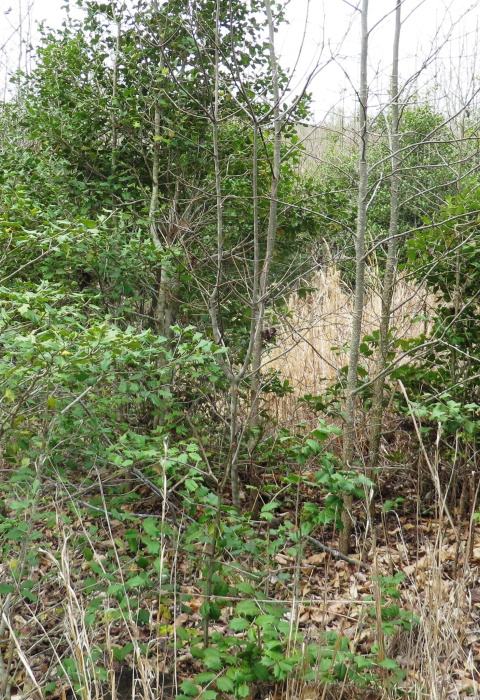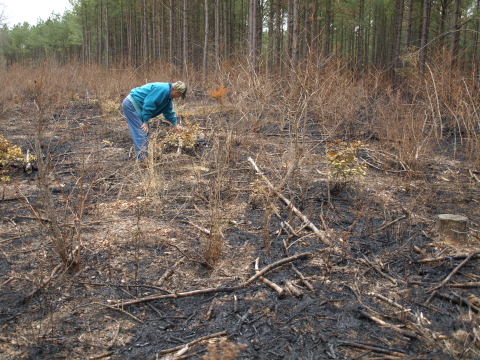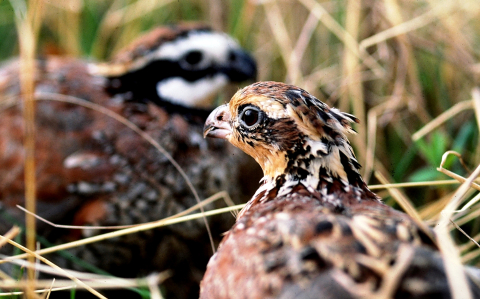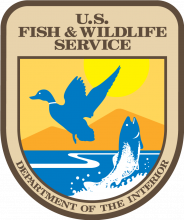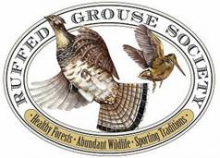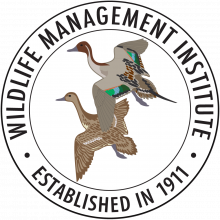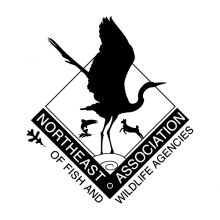State Wildlife Management Area Project
“Mattaponi Wildlife Management Area has some of the best woodcock habitat in Virginia, and it didn’t happen by accident,” says Virginia Department of Wildlife Resources (DWR) biologist Joe Ferdinandsen.
The 2,542-acre WMA in central Virginia includes damp floodplain soils that offer prime earthworm-feeding for American woodcock, even during dry periods. Worms nourish woodcock that breed on the WMA, stop there during the species’ fall and spring migrations, and winter on the area.
Regionwide, woodcock and bobwhite quail populations have fallen for decades as the old field, shrubland, and young forest habitats that the birds need have dwindled. Fortunately, habitat management actions aimed at helping woodcock also benefit quail, and vice-versa.
“Daylighting” Logging Roads
A key management approach on Mattaponi is “daylighting”: using prescribed burning, timber harvesting, brush-hogging, and mulching to create a border of thick habitat 50 feet wide on each side of the 8 to 10 miles of skid trails and logging roads that cross the WMA.
These practices boost the amount of sunlight reaching the ground, spurring the growth of low plants, including grasses, forbs, and wildflowers that pollinators visit. Shrubs like blackberry, greenbrier, buttonbush, and silky dogwood, along with small trees including American holly, Eastern redcedar, and river birch create a matrix of dense, mixed cover used by woodcock, quail, wild turkeys, and birds such as indigo buntings, eastern towhees, prairie warblers, and yellow-breasted chats.
Whip-poor-wills and Chuck-Will’s-Widows
Whip-poor-wills and chuck-will’s-widows find insect prey while flying above the roads and road edges. Reptiles including eastern box turtle, five-lined skin, and black racer share the thick terrestrial habitat.
Male woodcock launch their springtime display flights from old logging decks, clearings along the roads where logs were stored before being trucked to lumber mills.
Conservationists seeded the openings with wildlife food plants such as partridge pea, beggar lice, and bush clover. As vegetation thickens in spring and summer, quail and turkeys feed there on high-protein insects crucial to their young during the first several weeks after hatching. Later in the year, the logging decks offer nighttime roosting cover for quail and woodcock, both of which spend the night resting on the ground.
Since 2013, when Virginia DWR acquired the management area, logging operations have included thinning over 750 acres and clearcutting 100 acres of loblolly pine. The most recent thinning cuts were completed in early 2024. Harvest units are close to one another so wildlife can move freely into and out of older and younger habitats.
How to Visit
Mattaponi WMA is a fee-use area. Anyone 17 years of age or older must have a Virginia freshwater fishing license, hunting license, trapping license, boat registration, or DWR access permit. Visitors can purchase licenses in person at license agents, online at https://dwr.virginia.gov/licenses/, or by calling (804) 367–1000.
Mattaponi WMA is located on Paige Road, State Route 605, in Caroline County, 40 miles north-northeast of Richmond and 20 miles south-southeast of Fredericksburg. From Bowling Green, head north on State Route 2 for 0.3 miles.
Learn more about Mattaponi WMA and view a map.

